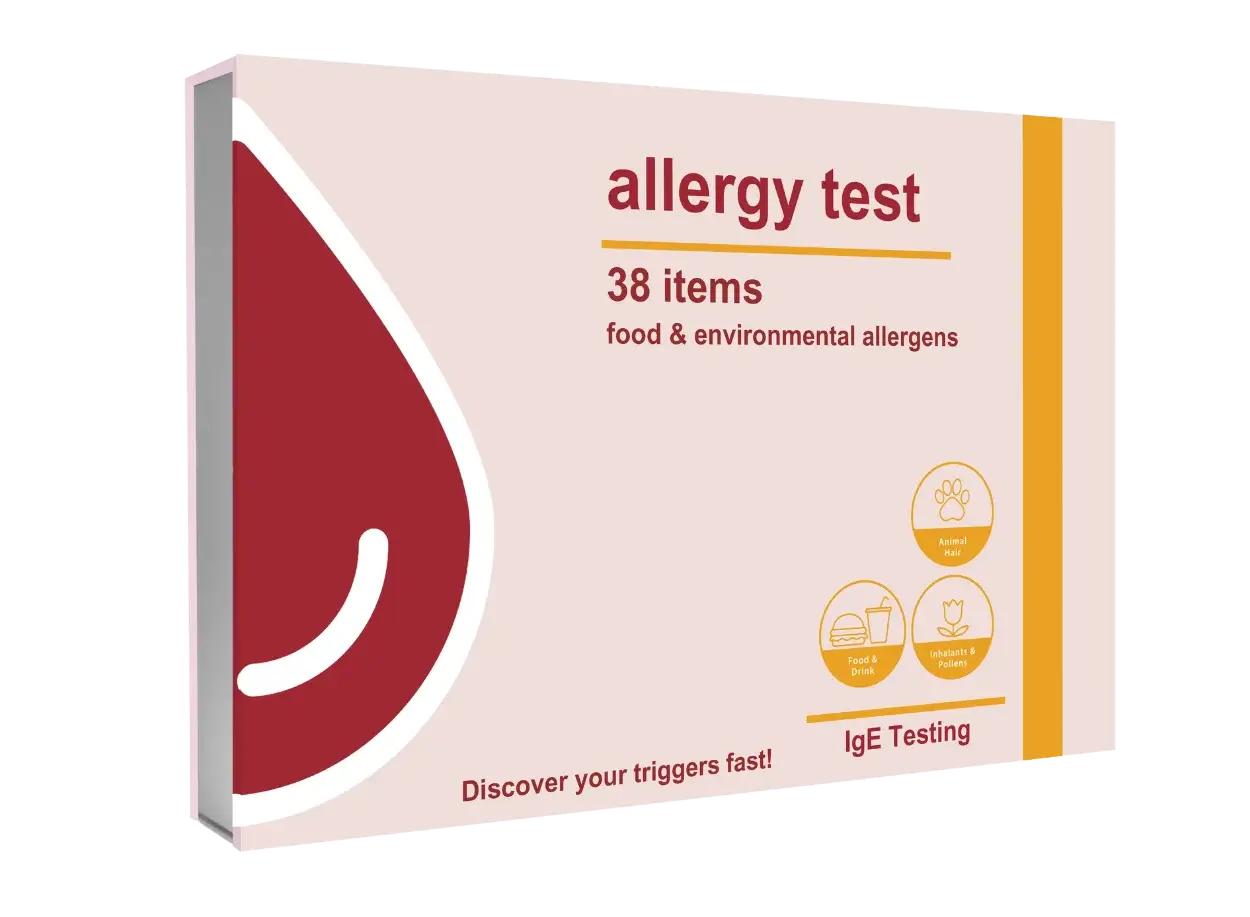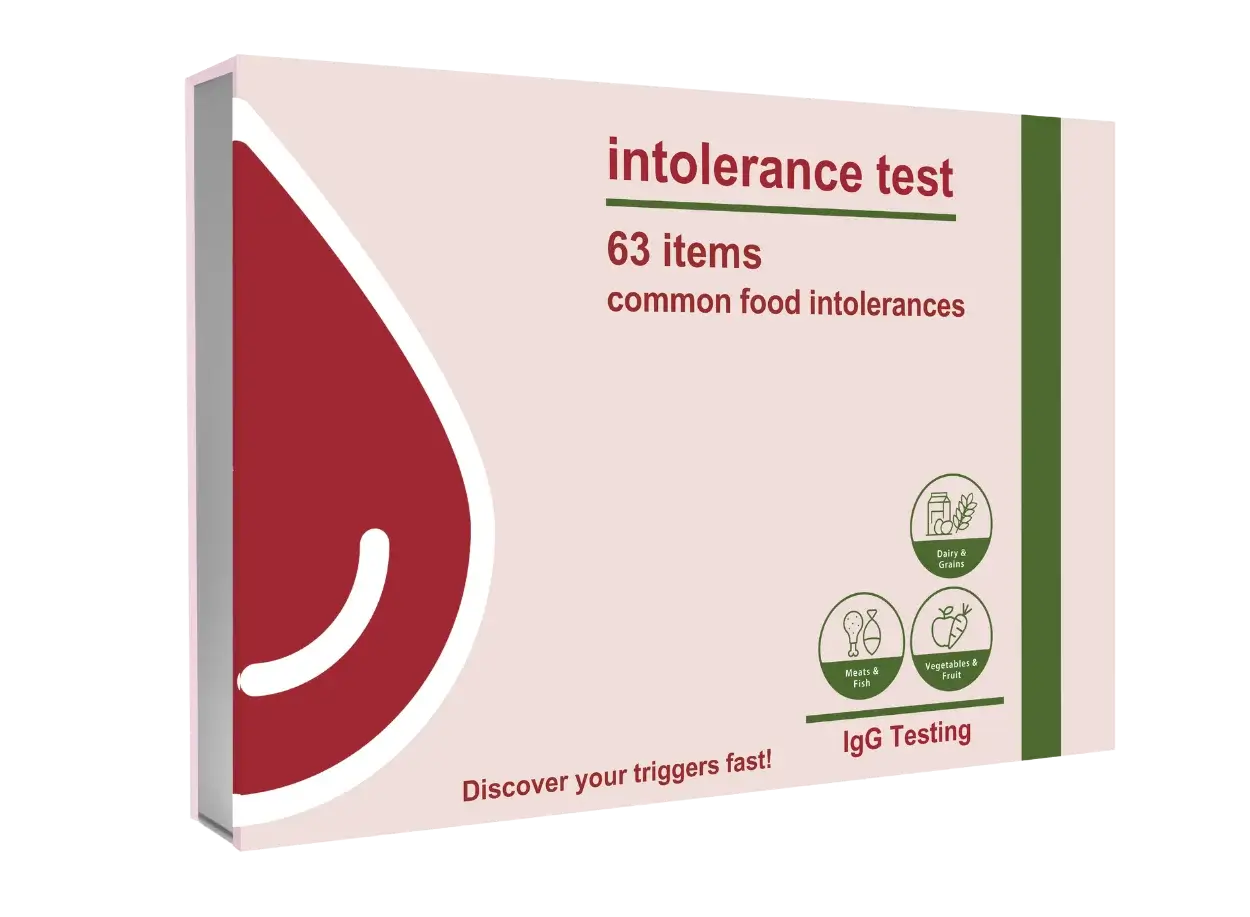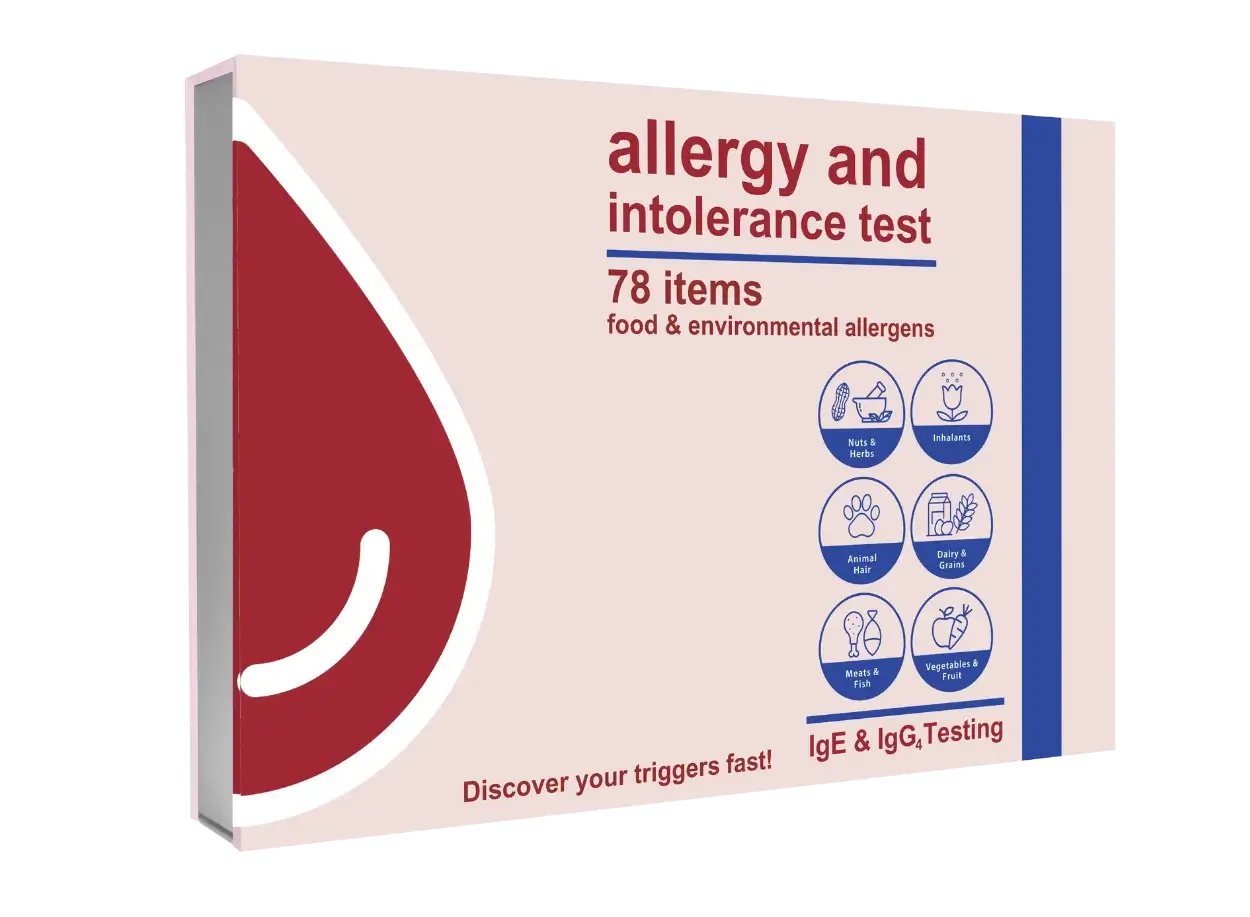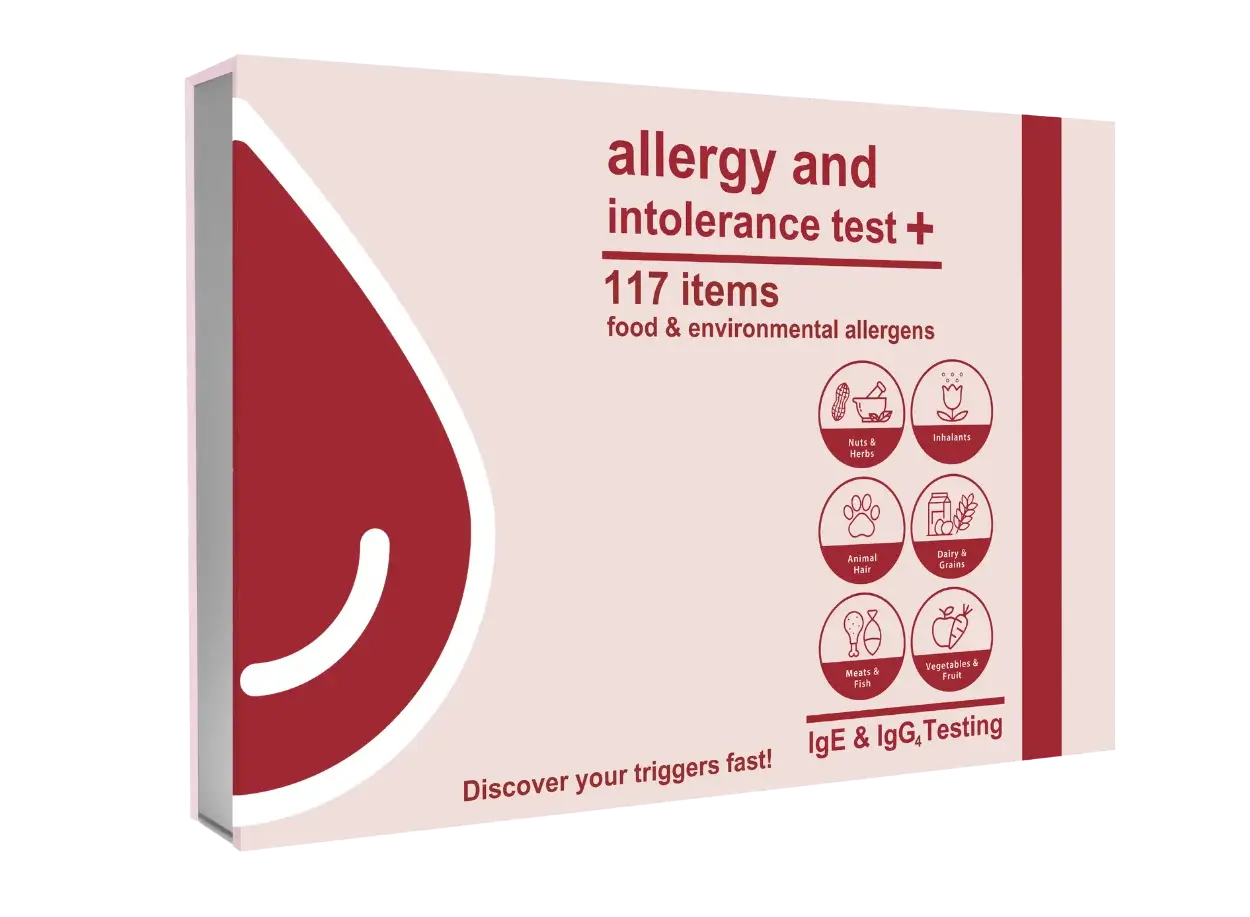The science behind our Allergy & Intolerance tests
Allergy Test
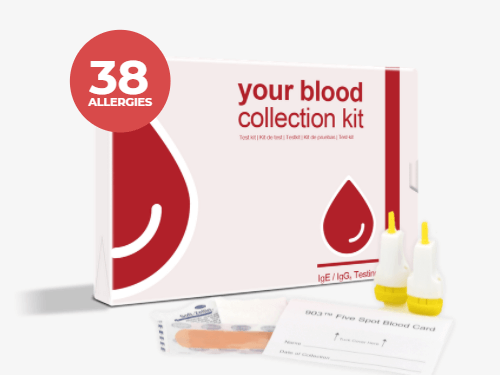
Intolerance Test
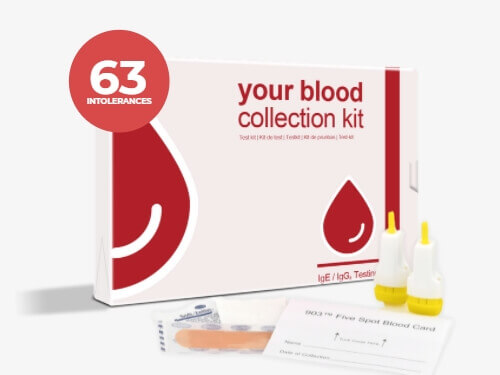
Allergy & Intolerance Test
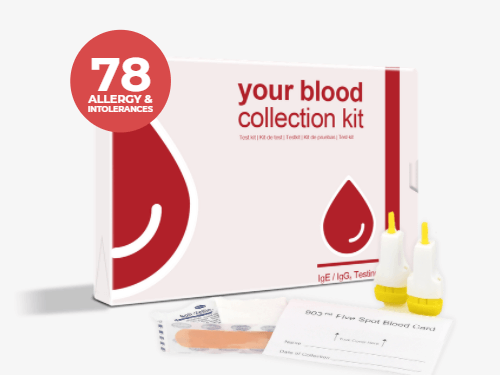
Allergy & Intolerance Test Plus
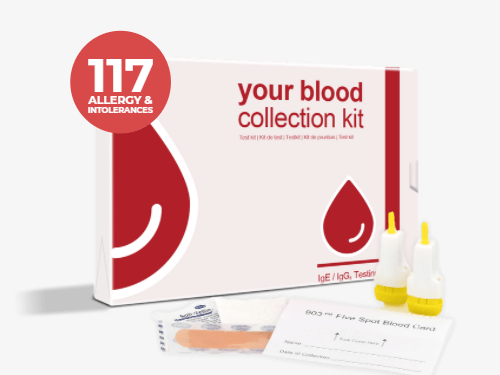
IgE Science
With Test Your Intolerance, you know you’re getting the best test for you because we offer a variety of tests, designed to give you exactly what you’re looking for. Our Allergy Test kit offers ELISA IgE blood testing, but what does this mean?
IgE antibodies are a key feature in the humoral immune response, fighting potentially dangerous antigens, which are foreign substances like bacteria, parasitic worms, and viruses that keep our bodies safe.
IgE Science
The prevalence of IgE-mediated allergy food reactions has been estimated at 3-4% of all children and adults (1). These dangerous, abnormal reactions are caused by food antigens and can be classified as immune IgE mediated and non-IgE mediated. The clinical manifestations or symptoms can be an anaphylactic reaction, atopic dermatitis, enterocolitis and oesophagitis. (2,3) These symptoms can be displayed, if it’s an intolerance, like headaches, bloating, localized itching, or skin irritations such as eczema, excessive mucous production, excessive gas, diarrhea, and fatigue. The allergy reaction symptoms can include localized swelling (i.e., of the throat or tongue), a rash, difficulty breathing and anaphylactic shock.
IgE antibodies are involved in Type I (or Type 1) allergies and they can cause rapid type immune reactions, with symptoms occurring within a few minutes up to two hours after eating a specific food.
Allergic patients produce IgE antibodies specific for foreign antigens, which are harmless to non-allergic individuals. These antibodies bind to IgE-specific receptors on the surface of mucosal and cutaneous mast cells and circulating basophils. IgE antibodies are located on chromosome 14. Inhaled or ingested allergens cross-link IgE bound to these effector cells, which results in aggregation of the receptors (4).
This cross-linking and aggregation cause the immediate release of preformed mediators such as histamine and, shortly thereafter, the release of newly formed mediators such as arachidonic acid products (e.g., leukotriene D4, prostaglandin D2) and cytokines such as tumour necrosis factor-α(TNF-α), IL-4, and IL-5 (5).
In an allergic response, an allergen stimulates the release of antibodies (IgE), which attach themselves to mast cells. Following subsequent allergen exposure, the mast cells (migrant cells part of the immune system) release substances such as histamine (a chemical responsible for allergic anaphylactic symptoms) into the tissue. Food item/s responsible for allergic reactions must be avoided completely.
Is IgE Testing still what you’re looking for? Then check out the Allergy Test here.
References:
3) Waserman S, Watson W, Food allergy. Allergy Asthma Clin Immunol 2011; 7 (1): S7.
4) Chang TW. The pharmacological basis of anti-IgE therapy. Nat Biotechnol 2000;18:157–162
More information about the IgE antibodies structure and clinical translation:
IgG4 Science
At Test Your Intolerance, we offer a range of blood tests to help find the right test for you. Our Intolerance Test kit offers an IgG4 ELISA blood test, but what does this mean?
The IgG4 antibodies can influence the inflammatory response but not activate it. We are using IgG4 in our intolerance tests because we are investigating delayed symptoms that could be associated with food and non-food intolerances. These do not cause an immediate immunological response, however, could still be causing you problems. For food intolerance, the presence of specific IgE and IgG antibodies can be observed. Some subclasses of IgG (mainly IgG4) inhibit the degranulation of basophils and mast cells and the activation of the complement cascade.
IgG4 Science
We are using IgG4 antibodies because, when we are testing intolerances, we are not looking at the immediate allergic reaction of Type I (or Type 1) allergy or inflammation related to chronic diseases (IgG1, IgG2, IgG3). IgG4 in fact is considered as preventative screening as they block access of IgE to the allergen, helping us to understand how your immune system is reacting to food antigens before an allergic reaction is developed.
The concentration of IgG4 is about 10,000 times higher than the IgE concentration. Therefore, IgG4 can bind faster and with greater frequency to the allergen than IgE mapping your immune response to food allergens. IgG4 antibodies result in only 1% of the histamine released by IgE, with few patients experiencing allergic symptoms. Therefore, IgG4 antibodies are mostly produced when the allergy is asymptomatic.
The primary function of IgG4 is to influence the immune-inflammatory response without the release of histamine factors (the main cause of inflammatory reactions), having the possibility to explore how the amount of IgG4 antibodies could be related to some of your symptoms (bloating, abdominal cramps, headaches to mention some). This will be the first step on your journey to find a better version of yourself.
For food intolerance, the presence of specific IgG antibodies (IgG4) will inhibit the degranulation of mast cells and activation of allergic symptoms (this will not exclude you from experiencing digestive imbalance, headaches and inflammatory reactions but not as serious as anaphylactic symptoms). Food items responsible for intolerance can be reintroduced in small quantities while monitoring how much you can eat without causing symptoms after following an elimination diet of six weeks.
Decided IgG4 Testing is the right test for you? Then check out the Intolerance Test here.
References:
1) Tsvetelina Velikova et al. Methods for detection of food Intolerance. Recent Advances in Food Science RAdvFoodScie 2018; 1(3): 106-119
IgG4 & IgE Combined
The lab team at Test Your Intolerance are proud to offer a comprehensive range of tests for you to choose from, depending on what you’re looking to get tested. Our IgG4 and IgE combined testing is the most complete way to ensure you’re getting accurate testing that works for you.
The Allergy & Intolerance Test & Allergy & Intolerance Test Plus offers both immunological and non-immunological responses, giving you a full overview of your body and the more specific reactions caused when you are fighting foreign substances via antigens.
In the last few decades, scientists have been examining the relationship between abnormal nutritional reactions and health issues which have gained a lot of interest. (1, 2) The prevalence of IgE-mediated allergy food reactions appears to be on the rise, and it’s estimated that food intolerance affects about 60% of the population (3).
Abnormal reactions to IgE food antigens can be classified as immune-mediated with the clinical manifestations of anaphylactic reactions. Non-IgE mediated symptoms can include atopic dermatitis, enterocolitis, oesophagitis. (4-5)
IgE antibodies are involved in Type I (or Type 1) allergies and they can cause rapid type immune reactions, with symptoms occurring within a few minutes to two hours after eating a specific food, while IgG antibodies are responsible for delayed immune reaction in food known as Type III (or Type 3) allergies with symptoms occurring within few hours to few days.
Both immune-mediated and non-immune-mediated reactions are involved in food intolerance development. The immune mechanism involved in food intolerance is associated with the formation of specific IgG antibodies. IgG antibodies are involved in the formation and accumulation in various organs of food protein complexes, resulting in inflammatory processes (6-7). In scientific literature, it is reported that 50% of patients affected by chronic diseases may possess IgG delayed mediated food intolerances (aka Type III or Type 3) (8).
IgE and IgG4 Combined Science
Both IgE and IgG antibodies are in closed proximity on chromosome 14 and they are read in sequence. Their production depends on the presence of Interleukins (ILs). In fact, when IL4 is released, it can be assumed that an IgE (Type I or Type 1 allergy) response will occur, with an immediate food reaction (9-10). The activation of an inflammatory reaction in terms of the IgE mediated response is due to the release of histamine compounds. The compounds come from the mast cells after the binding of an IgE antibody to the mast cell receptor as a response to the antigen attack. Antigen includes all those external agents that can be recognized as foreign and activate an immune response.
In case of sensitization when IL10 is present, mainly the production of IgG4 antibodies will be involved (9), while if other interleukins are synthesized IgG1, IgG2, IgG3 are mainly produced. The production of IgG1, IgG2, IgG3 antibodies when a specific food is consumed activates the formation of immune complexes with deposition in the body wherever the problem is (11). Unfortunately, there is a lack of scientific studies showing evidence that the deposition of immune complexes on tissues is connected to specific symptoms, which make the test of IgG1, IgG2, IgG3 antibodies not attractive from an Intolerance testing point of view. On the contrary, it was demonstrated that those antibodies are playing a role in the identification of allergic reactions of non-specific systemic reactions in which inflammatory processes play a major role (12)
Why combining IgG4 and Ige is best?
With the Allergy & Intolerance Test & Allergy & Intolerance Test Plus tests from Test Your Intolerance, you have the possibility to test for IgE and IgG4 antibodies at the same time. Testing for IgE and IgG4 antibodies gives the opportunity to test for, not only the immediate allergic reactions associated with an immune response (IgE) but also those reactions that are not IgE mediated. These can still cause symptoms as bloating, headaches, stomach cramps, diarrhea.
The IgG4 antibodies are known to be the blocking antibodies preventing the release of histamine factors and the activation of immediate allergic reactions (Type I or Type 1 allergy). IgG4 antibodies can influence an immune response but not activate that directly. Our Allergy & Intolerance Test Plus can help you to have a better overview of the specific immune response reactions in the presence of specific allergens. In this way we will be able to draw you a map of the reactions that you can take with you, to start your journey to find a better version of yourself.
Our tests are developed for the identification of specific IgE mediated allergies and IgG4 antibodies reactions. Unfortunately, there are also no IgE mediated allergic reactions and our tests are not able to detect those allergies. IgG4 antibodies are only used for the identification of intolerances and not allergies.
References
5) Waserman S, Watson W, Food allergy. Allergy Asthma Clin Immunol 2011; 7 (1): S7.
6) Sampson HA, Anaphylaxis: persistent enigma. Emerg Med Australas. 2006; 18: 101-2
IgG4 & IgE Intolerance
SOME FACTS
In the last decades conversations about the relation between abnormal nutritional reactions and health issues have gained a lot of interest. (1)
The prevalence of food reactions (IgE mediated allergy) in Europe has been estimated at 3-4% in young children and adults (2), while food intolerance affects about 60% of the population. (3)
Abnormal reactions to food antigens can be classified as immune-mediated (IgE, with clinical manifestations, anaphylactic reaction) and non-IgE mediated (atopic dermatitis, enterocolitis, oesophagitis). (4-5)
IgE antibodies are involved in TypeI allergy and they mediate rapid type immune reactions, with symptoms occurring within a few minutes to two hours after eating a specific food, while IgG antibodies are responsible for delayed immune reaction in food (TypeIII allergy) with symptoms occurring within a few hours to few days.
Both immune-mediated and non-immune-mediated reactions are involved in food intolerance development. The immune mechanism involved in food intolerance is associated with the formation of specific IgG antibodies. IgG antibodies are involved in the formation and accumulation in various organs of food protein complexes, resulting in inflammatory processes (6-7). In scientific literature is reported that 50% of patients affected by chronic diseases may possess IgG delayed mediated food allergy/intolerance (8).
BACKGROUND FOR IgG ANTIBODY TESTING
Both IgE and IgG antibodies are in closed proximity on chromosome 14 and they are read in sequence. Their production is depending on the presence of Interleukins (ILs) in fact when IL4 is released it can be assumed that an IgE (TypeI allergy) response will occur, with an immediate food reaction (9-10). In case of sensitization when IL10 is present, mainly the production of IgG4 antibodies will be involved (9), while if other interleukins are synthesized IgG1, IgG2, IgG3 are mainly produced. The production of IgG1, IgG2, IgG3 antibodies when a specific food is consumed activates the formation of immune complexes with deposition in the body where the problem is (11). Lack of scientific studies showing evidence that the deposition of immune complexes on tissues is connected to specific symptoms make the test of IgG1, IgG2, IgG3 antibodies are not attractive from an Intolerance testing point of view. On the contrary, it was demonstrated that those antibodies are playing a role in the identification of allergic reactions of non-specific systemic reactions in which inflammatory processes play a major role (12)
WHY DO WE TEST FOR IgG4 USING BLOOD IN OUR INTOLERANCE TESTS?
We are using IgG4 antibodies because:
•When we are testing intolerances, we are not interested in the immediate allergic reaction (TypeI allergy) or inflammation related to chronic diseases (IgG1, IgG2, IgG3). IgG4 in fact is considered the blocking antibody in respect to IgE and they block access of the IgE to the allergen, helping us to understand how your immune system is reacting to food antigens before an allergic reaction (TypeI) is developed (preventive screening).
•The concentration of IgG4 is about 10,000 times higher than the IgE concentration. Therefore, IgG4 can bind faster and with greater frequency to the allergen than IgE (10) mapping your immune response to food allergens.
•IgG4 antibodies result in only 1% of the histamine released by IgE, with few patients experiencing allergic symptoms and therefore IgG4 antibodies are mostly produced when the allergy is asymptomatic.
•The primary function of IgG4 is to influence the immune-inflammatory response and having the possibility to explore how the amount of IgG4 antibodies is related to particular allergens, it will be the first step towards your journey for a healthier life.
At Healthy Stuff, we are here to help you take the first step into your journey to finding a Healthier version of yourself promoting happiness and wellbeing. Our IgG4 Intolerance tests are a tool to help you understand how your immune system is reacting to food allergens. We are not suggesting you take any food diet elimination, after this IgG4 Intolerance test without further medical advice. With this test, we are helping you draw a map of how your immune system is reacting to food allergens and take this journey together to find a better version of yourself.
References:
5) Waserman S, Watson W, Food allergy. Allergy Asthma Clin Immunol 2011; 7 (1): S7.
6) Sampson HA, Anaphylaxis: persistent enigma. Emerg Med Australas. 2006; 18: 101-2
9) Sagara, N., Fujita, S., Suzuki, R. et al. Successful sublingual immunotherapy for severe egg allergy in children: a case report. Allergy Asthma Clin Immunol 2021; 17:2-4
General Queries
What is an allergy?
An allergy is a type I hypersensitivity. This means that if an individual is exposed to an allergen then it results in the production of immunoglobin E (IgE antibodies), and the release of histamine and symptoms. It is an immediate response known as an IgE-mediated immune response with symptoms occurring almost straight away. That is one of the major differences between an allergy and intolerance: the time it takes for a reaction and the symptoms to occur. Allergic reactions can occur almost immediately whereas an intolerance reaction can sometimes present itself up to 72 hours later.
How do you spot an allergy?
Allergens themselves are usually quite easy to identify due to the quick nature of which the reaction occurs. A food diary and allergy test can help in this regard. but this does depend on the severity of reaction as well as other factors, including hydration, the time of year and sometimes even the processing of the food, especially with regard to the amount.
Allergies can be life-threatening
Many people who suffer from an allergy know that an allergic response to a food or a non-food item. This has the potential to be life-threatening in certain individuals. In the case of severe allergies, even the tiniest traces of an allergen can have an effect on the individual. This is particularly important to know in regard to peanuts, as peanuts are used in all sorts of cooking oils and ingredients, and are one of the most common allergies for people to suffer from.
Ingredients, Oils and Different Allergies
Depending on what type of item is ingested, different symptoms will present themselves differently. Symptoms of an allergy can present themselves differently, including skin rashes, hives, vomiting and swelling of the mouth, throat, and tongue (!). An individual who has multiple allergies may also have different symptoms for different items. Remember, allergies can often be hereditary, and so if someone in your family has an allergy, you should definitely learn whether or not you have an allergy.
What to do if you are experiencing these symptoms?
If you are experiencing any of the listed symptoms of an allergy, then you should immediately order a test and also consult a Doctor. It is incredibly important that you know what to do, as an allergic reaction has the potential to be life-threatening. If diagnosed with a food allergy, you must do your best to consistently avoid these items. In particular, if you have severe allergies or asthma, then education and learning can help you to avoid a life-threatening situation.

